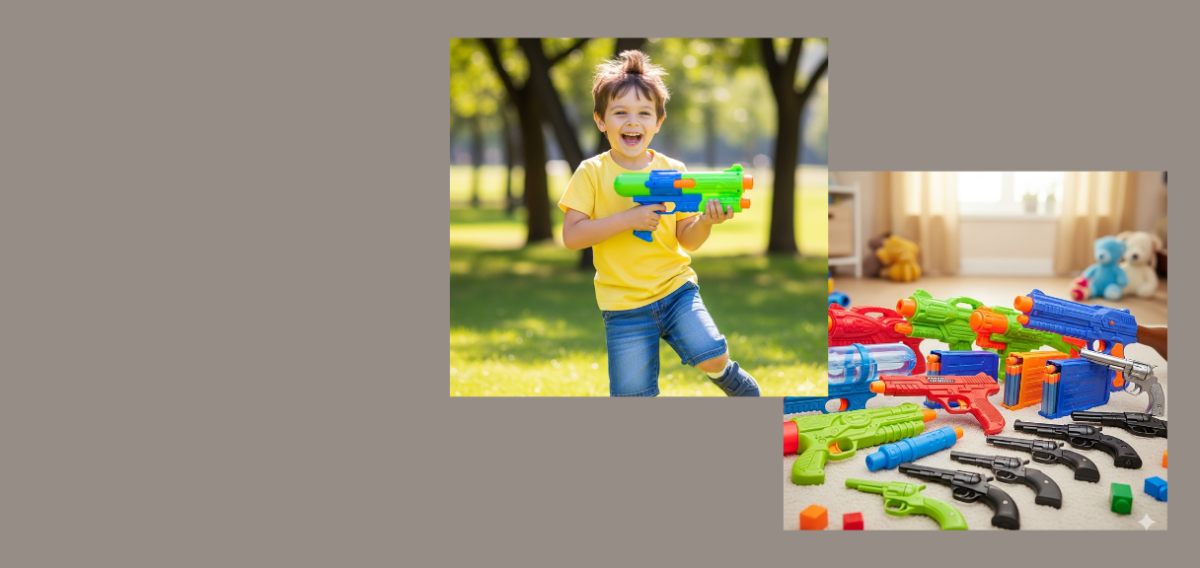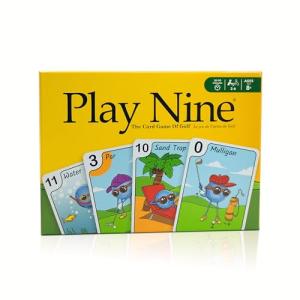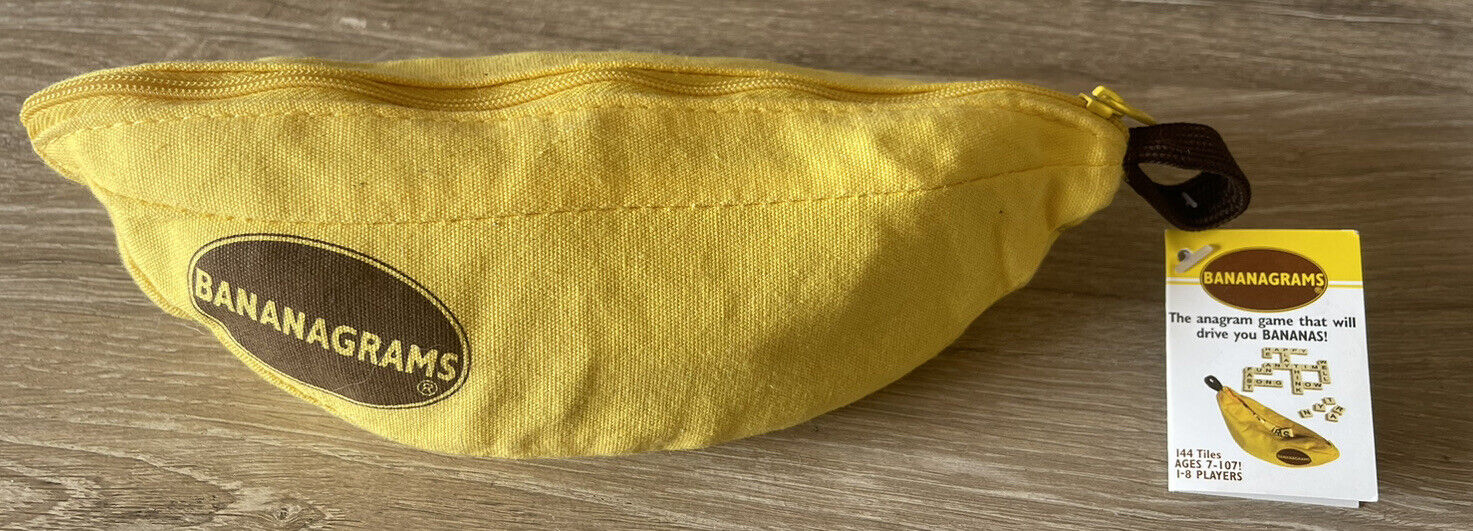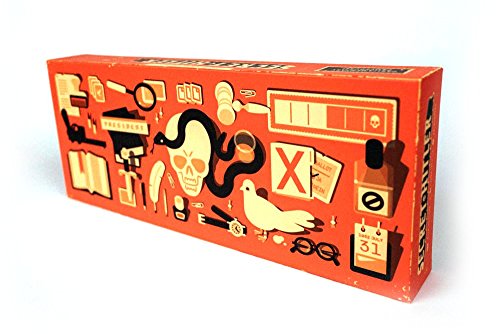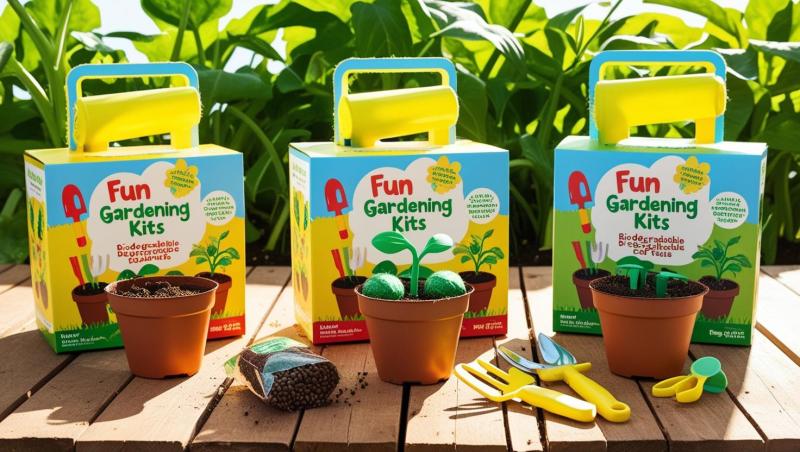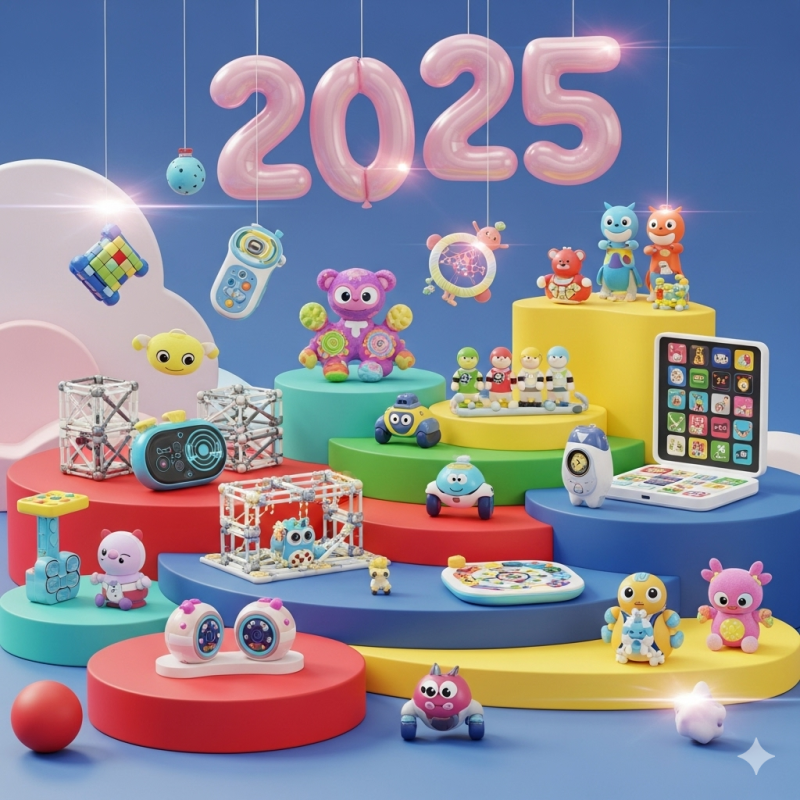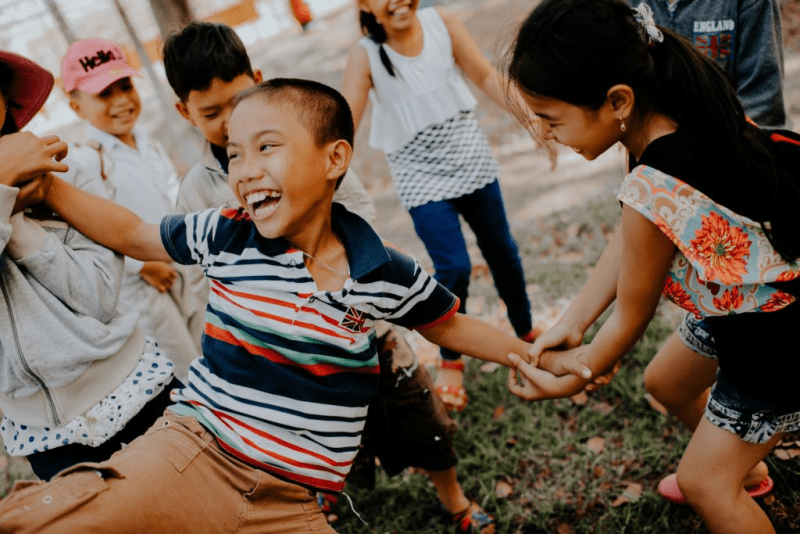Toy Guns: A Personal Reflection and Broader Perspective
One of my favorite childhood play experiences was dressing up in my cowboy outfit. It included the classic cowboy hat, suede waistcoat, and, of course, a six-shooter toy pistol holstered at my side. I would spend hours practicing my quick draw in front of the mirror, entranced by all the Western TV shows and films where heroic cowboys faced off in dramatic standoffs. That six-shooter was more than a toy; it was my gateway to adventure, imagination, and storytelling.
As I grew older, however, my views changed drastically. I developed a deep commitment to pacifism and chose to reject not only toy guns but all forms of play weaponry. When my husband and I became parents, we agreed that we would raise our children without toy pistols, rifles, machine guns, or any weapon-like toys. We wanted our home to be a sanctuary of love and tolerance, free from the conflicting messages such toys might send.
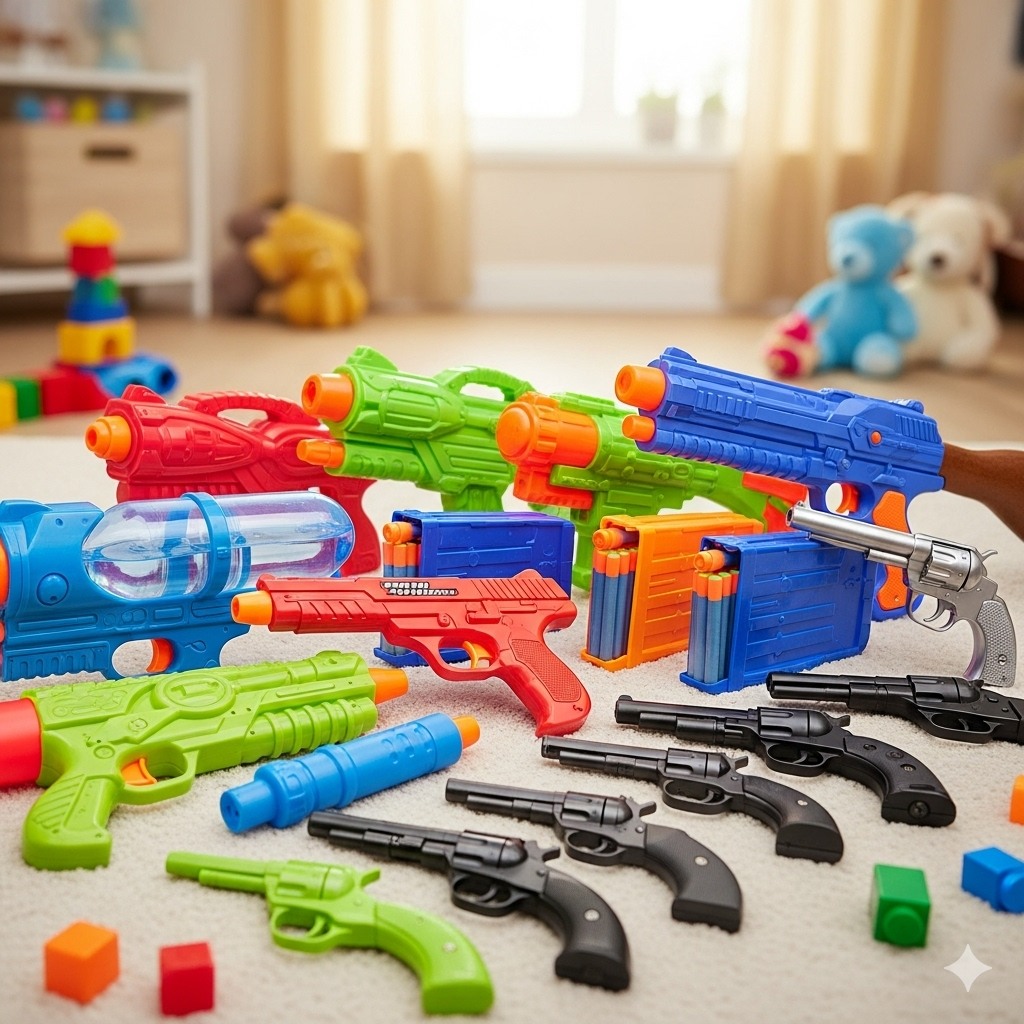
Walking through toy stores used to be an exciting experience, but now I find it disheartening to see aisles lined with toy grenades, fire throwers, and a variety of plastic armaments marketed to children. We made it clear to friends and family that we didn’t want toy guns as gifts for our children. This decision sometimes invited criticism. Some thought we were overly strict; others who had bought such toys felt personally criticized. For us, though, it was simply a deliberate choice reflecting our values.
We believe that children should grow up in environments that encourage peace. There’s a strong contradiction in telling children not to fight in the schoolyard because violence is wrong, yet simultaneously allowing or encouraging them to engage in pretend gun battles. Defenders of toy guns often say, “It’s only pretend,” but we feel that this pretense normalizes and trivializes violence. Too often, the distinction between play and reality blurs, and the glorification of toy guns can contribute subtly to a culture that accepts real violence.
Our society saturates media with violent themes—TV shows, movies, video games all depict shootings and conflict as entertainment. This desensitization can dull young people’s empathy and reduce their sensitivity to human suffering. Children immersed in violent play may increasingly see aggression as an acceptable, even “cool,” response to confrontations. Sadly, tragic events like the Columbine school massacre stand as stark reminders that the problem is real and complex.
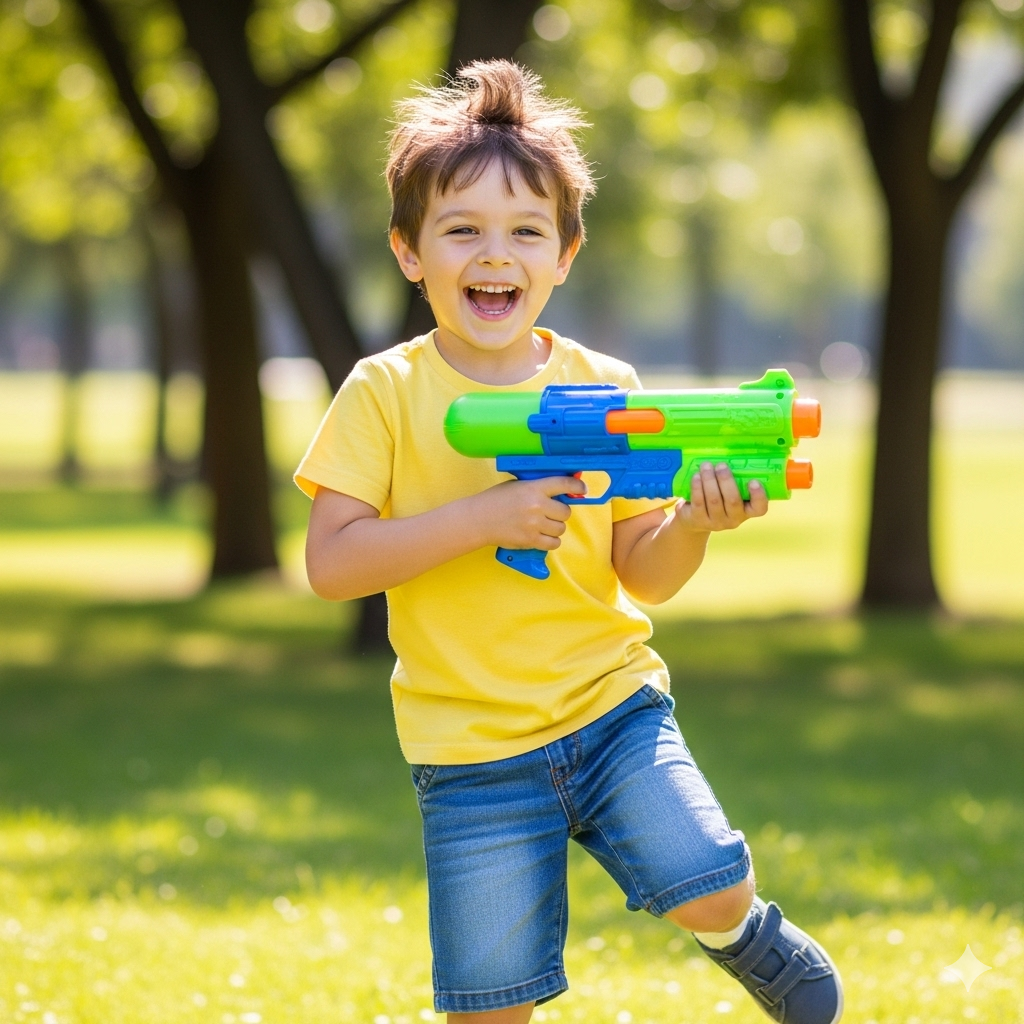
Understanding the Debate: What Does Research Say?
The impact of toy guns on children’s behavior has been the subject of many studies, yet consensus remains elusive. Some research suggests that play with toy guns correlates with increased aggressive behavior, while others find little to no long-term harmful effects when context and supervision are considered.
For instance, a study published in 1976 found that children who played with toy guns showed more antisocial behaviors compared to those playing with non-weapon toys. However, more recent rigorous studies challenge a direct causal link between toy gun play and future violence or juvenile crime.
One extensive longitudinal study assessing children from ages 5 to 15 found that early play with toy weapons was only weakly associated with aggression, and this association vanished after controlling for other variables such as attention deficit hyperactivity disorder (ADHD) or depressive symptoms. The authors concluded that pretend aggression in play is unlikely to predict later criminality independently.
Additionally, some psychologists argue that play fighting and war games, including toy gun play, can serve healthy developmental functions. When guided appropriately by caregivers, these play forms allow children to explore complex emotions, learn social boundaries, and develop conflict resolution skills in a safe environment.
Other researchers highlight the importance of parental supervision and the child’s environment. For example, children who play with toy guns in households promoting peace and empathy generally don’t exhibit increased aggression. Conversely, children from aggressive or neglectful backgrounds may require play intervention strategies limiting exposure to such toys.
An interesting perspective is that overly restricting war-related play might impede children’s natural developmental needs to act out conflicts and understand power dynamics symbolically. Many experts believe moderate, supervised exposure to pretend fighting is normal and even beneficial if balanced with positive emotional learning.
Balancing the Pros and Cons
For parents like us who consciously avoid toy guns, the concerns are clear: toy weapons can convey confusing messages, glamorize violence, and potentially desensitize children. We worry about children learning the wrong values, especially when society surrounds them with violent cues.
On the flip side, there is recognition that playing with toy guns is a longstanding tradition of imaginative play. It can foster creativity, teamwork, and physical activity. Some children use such toys to act out stories from history or fantasy, expanding their narrative skills and social bonds.
The key appears to lie not in toy guns themselves but in the context, supervision, and guidance surrounding their use. Caregivers who engage with children about the difference between pretend play and reality, promote nonviolence, and teach empathy mitigate possible negative effects.
Alternatives to Toy Guns
Parents uneasy about toy guns but wanting to encourage imaginative play can explore numerous alternatives:
-
Costumes without weapons: Cowboy hats or soldier outfits without guns can inspire dress-up fun.
-
Nonviolent role-play sets: Doctors, astronauts, chefs, and other professions encourage creativity without conflict.
-
Nerf-style foam blasters: These softer toys offer shooting gameplay without realistic violence.
-
Water guns or squirt toys: Less threatening and more about splash fun.
-
Creative and constructive toys: Building blocks, puzzles, and crafting kits channel energy into creation, not destruction.
Educating Children About Violence
As adults, we must also teach children about the consequences of violent actions. This doesn’t mean exposing them to graphic scenes but rather fostering empathy through stories, discussions, and real-world examples.
Visiting veteran hospitals or historical museums helps children understand the harsh realities behind weapons and wars. These experiences can counterbalance any glamorization of violence they might see in entertainment or play.
Society and Toy Guns: Moving Forward
The debate around toy guns reflects broader societal questions about how violence is portrayed and accepted in culture. Toy manufacturers, lawmakers, schools, and families each play a role in shaping norms that value peace and respect.
Some countries have implemented bans or restrictions on realistic toy guns to avoid accidents and discourage imitative violence. This illustrates a growing awareness of the symbolic power of toys and their influence.
As caregivers, reflecting on our values and experiences guides the choices we make. For us personally, rejecting toy guns was a decision rooted in promoting nonviolence and emotional safety. For other families, the choice might differ but always benefits from thoughtful consideration.
Conclusion
Toy guns evoke strong feelings—nostalgia and fun for some, concern and caution for others. Parenting decisions about toy guns hinge on beliefs about violence, play, and child development.
Research shows the impact of toy guns on aggressive behavior is nuanced and influenced by many factors. Parental involvement, supervision, and teaching about empathy and conflict resolution shape how such toys affect children.
Ultimately, choosing whether or not to include toy guns in a child’s playroom is a deeply personal decision. Considering alternatives that encourage imaginative play without guns offers a path towards peaceful, creative childhoods.
By promoting understanding, empathy, and safe play, we help children build the skills they need to navigate conflict wisely and compassionately as they grow.
